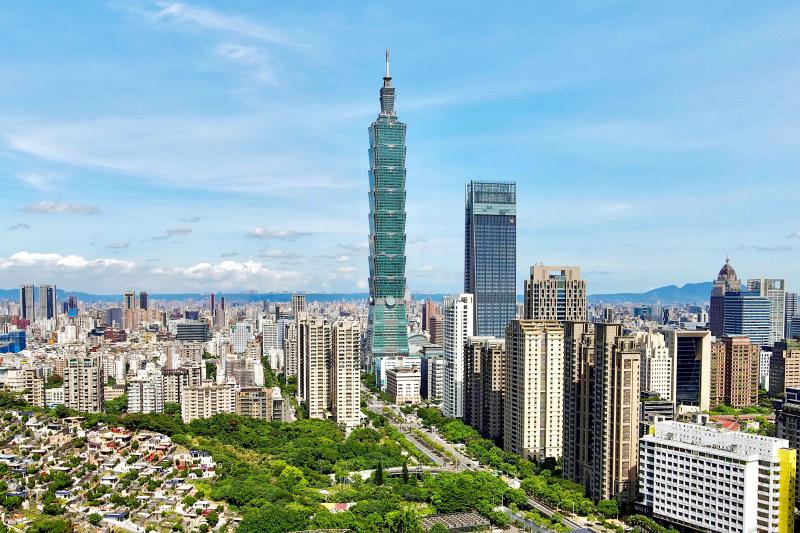Foreign direct investment declined 35.17 percent annually in the first eight months of the year to US$3.72 billion, while 1,757 investments were approved over the period, down 22.12 percent from a year earlier, the Investment Commission said yesterday.
The commission blamed the COVID-19 pandemic for the decline, saying that investments by multinationals have so far this year slowed markedly.
From countries included in the government’s New Southbound Policy, 332 investments were approved in the first eight months, a drop of 3.77 percent year-on-year, but the amount invested reached US$450.70 million, up 63.96 percent from a year earlier, the commission said.

Photo: Sam Yeh, AFP
Most of the investments from New Southbound Policy countries came from Singapore, Thailand and Australia, it added.
Only 26 Chinese investments were approved, down 63.38 percent year-on-year, the commission said, adding that the investments totaled US$29.47 million, down 75.09 percent annually.
“The decline [in investments from China] has to do with changes in international strategic conditions, the intensification of the US-China trade war, shifts in cross-strait relations and changes in regulations governing Chinese investors in Taiwan,” it said.
The commission approved 265 outbound investments, down 27.6 percent year-on-year, but they totaled US$8.63 billion, up 36.7 percent year-on-year.
The commission said that “a handful of outsized investments,” such as GlobalWafers Co’s (環球晶圓) acquisition of Germany’s Siltronic AG, accounted for the rise in US dollar amounts, despite the decrease in the number of projects.
As for New Southbound Policy countries, only 82 outbound investments were approved in the first eight months, down 32.23 percent year-on-year.
However, the total amount invested hit US$5.35 billion, up 197.31 percent from the previous year, with major investments in Singapore, Vietnam and Thailand, the commission said.
The commission approved 277 China-bound investments, a drop of 12.34 percent year-on-year, which totaled US$2.60 billion, a drop of 32.75 percent, it said.
“The main reason for the drop in investments in China is the hike in wages and land prices, and commodities prices in Taiwan,” the commission said.
“With the investment environment not what it used to be, plus the rise in US-China tensions, Taiwanese investors are increasingly cautious,” it added.

WEAKER ACTIVITY: The sharpest deterioration was seen in the electronics and optical components sector, with the production index falling 13.2 points to 44.5 Taiwan’s manufacturing sector last month contracted for a second consecutive month, with the purchasing managers’ index (PMI) slipping to 48, reflecting ongoing caution over trade uncertainties, the Chung-Hua Institution for Economic Research (CIER, 中華經濟研究院) said yesterday. The decline reflects growing caution among companies amid uncertainty surrounding US tariffs, semiconductor duties and automotive import levies, and it is also likely linked to fading front-loading activity, CIER president Lien Hsien-ming (連賢明) said. “Some clients have started shifting orders to Southeast Asian countries where tariff regimes are already clear,” Lien told a news conference. Firms across the supply chain are also lowering stock levels to mitigate

Six Taiwanese companies, including contract chipmaker Taiwan Semiconductor Manufacturing Co (TSMC, 台積電), made the 2025 Fortune Global 500 list of the world’s largest firms by revenue. In a report published by New York-based Fortune magazine on Tuesday, Hon Hai Precision Industry Co (鴻海精密), also known as Foxconn Technology Group (富士康科技集團), ranked highest among Taiwanese firms, placing 28th with revenue of US$213.69 billion. Up 60 spots from last year, TSMC rose to No. 126 with US$90.16 billion in revenue, followed by Quanta Computer Inc (廣達) at 348th, Pegatron Corp (和碩) at 461st, CPC Corp, Taiwan (台灣中油) at 494th and Wistron Corp (緯創) at

NEW PRODUCTS: MediaTek plans to roll out new products this quarter, including a flagship mobile phone chip and a GB10 chip that it is codeveloping with Nvidia Corp MediaTek Inc (聯發科) yesterday projected that revenue this quarter would dip by 7 to 13 percent to between NT$130.1 billion and NT$140 billion (US$4.38 billion and US$4.71 billion), compared with NT$150.37 billion last quarter, which it attributed to subdued front-loading demand and unfavorable foreign exchange rates. The Hsinchu-based chip designer said that the forecast factored in the negative effects of an estimated 6 percent appreciation of the New Taiwan dollar against the greenback. “As some demand has been pulled into the first half of the year and resulted in a different quarterly pattern, we expect the third quarter revenue to decline sequentially,”

ASE Technology Holding Co (ASE, 日月光投控), the world’s biggest chip assembly and testing service provider, yesterday said it would boost equipment capital expenditure by up to 16 percent for this year to cope with strong customer demand for artificial intelligence (AI) applications. Aside from AI, a growing demand for semiconductors used in the automotive and industrial sectors is to drive ASE’s capacity next year, the Kaohsiung-based company said. “We do see the disparity between AI and other general sectors, and that pretty much aligns the scenario in the first half of this year,” ASE chief operating officer Tien Wu (吳田玉) told an